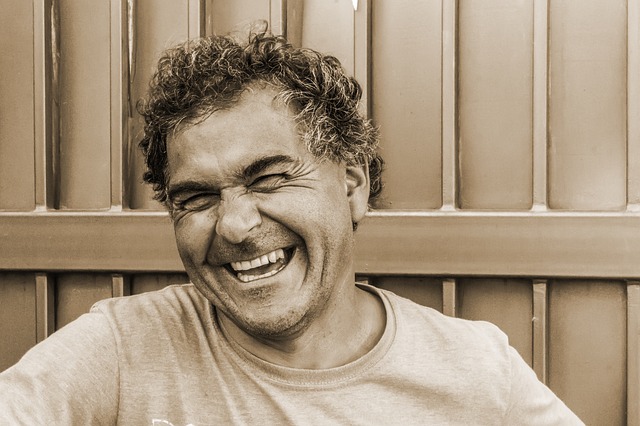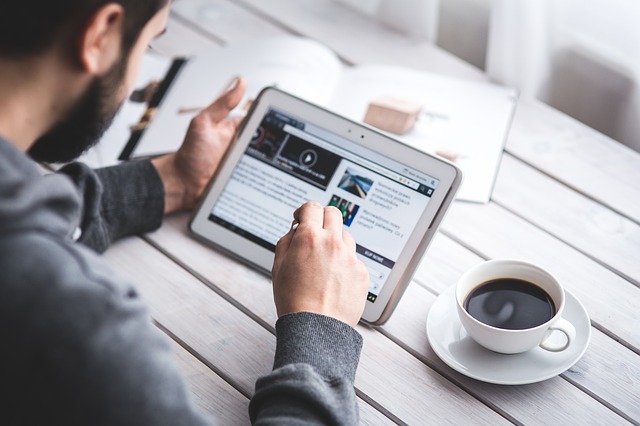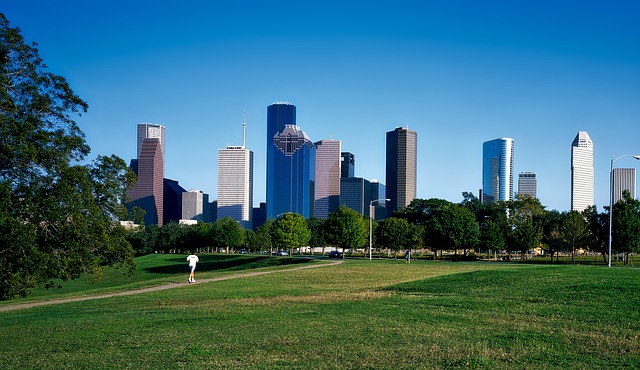Posts by Randall Holmes
Staying Happy in the Workplace
Happiness in the workplace takes constant dedication
Even people who are immensely satisfied with their job still need to monitor themselves to prevent the onset of weariness. We need to constantly listen to our bodies and brains: take stock of your stress levels, feel the twinges of pain and respond to them in a healthy manner rather than burying them away until they surface calamitously in the future. Essentially you need to separate “working you” from “you you.”
Ways to stay happy in the workplace
By exerting control over the factors that are within your power, you can set the balance equally against those factors you cannot control and thereby prevent a lot of unnecessary stress. Here is a brainstorm of ways to improve your experience in the office:
- The comfort of your workspace: temperature is important. Too hot and your brain boils; too cool and your office feels like a cave so 65-70 Fahrenheit is a good target. Your ergonomic setup is also important for preventing pain and contributing to good posture.
- Noise: keep the sound down as much as possible to contribute to a more zen atmosphere in the office.
- Engage with coworkers: face-to-face, not over e-mail!
- Keep moving: stand up and go for no-screens at least once every hour
How we help
While there has been a recent change in the attitude of companies toward employee health, many offices still sell their employees short in terms of ergonomics and stress management. At our office, we are your resource if you are feeling burned out from office life. We can help your body combat physical stress by addressing subluxation and muscle tension, which will allow you to focus on feeling your best mentally. Give our office a call to schedule an appointment today.
Empower Yourself from your Office Chair
You are losing flexibility while you sit hunched over.
8 hours in an office chair is a brutal reality for your back. Multiply that by the average amount of days you work in a year and you can see how the hours add up against your spine. Unless we are proactive, we are literally letting our flexibility fall by the wayside to the chagrin of our bodies. We need flexibility to perform basic human movements without pain: the lifts, twists, turns, and reaches that make up the subconscious movements of the day. Even standing up and walking depends on our bodies having a baseline of flexibility.
Stretching from your desk can revolutionize the way you feel at work.
Try this from your office chair:
- Gentle twist: Sit up straight. Gently twist to the right and look over your right shoulder. Hold for 5-10 seconds and repeat on the other side.
- Fold from the chair: come to the edge your chair and extend your legs forward with feet hip-distance apart. Exhale and fold your upper body forward reaching with your hands for your feet. Grasp as far down your leg as you can and hang for 15 seconds.
- Upper shoulder stretch: Reach right hand over right shoulder and reach your left hand behind your back. Clasp your hands together and create a tension that stretches the shoulders and chest. Hold 15 seconds.
Stop feeling stiff at work
This stretch routine takes about 2 minutes and it can release a lot of tension from the body. If you could do it once every hour you would be doing your body a grand favor. Let’s work together to identify the ways in which you are letting your body down. From poor body mechanics and movement to poor posture, everyone has room for improvement. By being proactive about your flexibility, you can ensure an old age with less pain and more independence. Let’s start moving more and moving more purposefully today! Give our office a call to schedule an appointment.
Mental Health Realignment Therapy
We’ve all used the term, “I’m taking a mental health break,” when we take a needed day off from work. But simply “not working” is not the same as doing something positive for our mental wellbeing.
As Noam Spencer Ph.D. said, “Mental health is not a destination, but a process. It’s about how you drive, not where you’re going.”
What’s Involved in a Mental Health Break?
Removing yourself from stressful situations, like anxiety at your workplace, is a good way to start. But then what? Your brain is still hard at work trying to resolve those issues you thought you distanced yourself from.
Getting yourself healthy, whether physically or mentally, requires you to be proactive in the process. When your body is in need of alignment, you call a qualified chiropractor, like Dr. Randall Holmes, DC in Houston, Texas, to put things right and get you back in the game. Here, he offers you some suggestions for getting your mental wellbeing realigned too.
Suggestions for Achieving Better Mental Health
Clean your house. That may sound like a terrible way to take a break until you consider how much clutter leads to stress. Try cleaning out a closet or two. It often leads to hours of looking at old photographs and vacation souvenirs, which can be its own little getaway.
Revisit Old Loves. Not old flames, but old pastimes. If roller skating, playing the guitar, or finger painting was something you enjoyed as a child, try picking it up again. You may find they missed you too!
Do Good. Nothing takes us out of ourselves more than investing our time in something outside ourselves. You can volunteer to rock preemies at the local hospital, serve hot meals to the aged, or go all in and start your own charitable organization. It’s possible to get grants if you’re registered as a non-profit.
Fresh Air and Sunshine. It’s been said so often it’s become a cliche, but walking outside is so good for us, it almost doesn’t matter where you walk or how fast. However, combining the walk with being out in nature gives us a double shot of those feel-good endorphins.
Tai Chi. Originating thousands of years ago as a martial arts practice Tai Chi is noted for how well it integrates physical exercise and mental wellbeing. Its slow, deliberate movements focus on proper body alignment, breathing, and relaxation.
Pet a Dog. If your difficulties in maintaining consistent mental health are interfering with your ability to work or simply enjoy life, you may qualify for a therapy dog. The simple act of petting a dog has been shown to lower pulse rates and blood pressure while relieving stress, anxiety, and depression. Or if you’ve been thinking of getting a dog as a pet and need another good reason, mental wellbeing could be just a wag and a lick away.
Get Physically Realigned. If your body is out of alignment, you’re in constant discomfort and that’s something you can’t take a vacation from. Visit a qualified chiropractor for needed adjustments before the pain becomes chronic or before you head to a pharmacy.
Plant a Garden. It doesn’t matter if you want to grow petunias or potatoes, there’s something rawly therapeutic about digging in the dirt. Visit a local nursery with a bag full of the type of soil available in your yard along with photos of the area you’re designating for your new garden to give the professionals an idea of the conditions your space offers. They’ll have the best suggestions on what and how to grow your new garden.
Drive to the Closest Beach. We are biologically drawn to water. Nearly 40% of the U.S. population lives within 100 miles of a coastal area. Whether it’s the sea or a lake, we all feel more relaxed near the water. Even the color blue of the water is associated with calmness and relaxation. Wiggling our toes in the sand is the icing on our beach-break cake.
In today’s society, even with all the technology at our fingertips to ease both our physical and mental labors, we seem more anxious and worried than at any other period in history. Maybe that’s a sign that getting back to the basics to improve our mental health is exactly what the doctor ordered.
10,000 Steps: Is Walking your way to Fitness Realistic?
What’s the big deal behind 10,000 steps?
It is a nice round number that can be easily tracked by fitness devices, and the number seems to have stuck. Science is currently debating the specifics of 10,000 steps down to the detail of the individual’s leg length, and overall fitness of the individual. Of course, fitness is more nuanced than a simple round number like 10,000 but there is still merit to the idea.
The math behind 10,000 steps:
10,000 steps can be achieved in roughly 30 minutes of walking. This is a lot easier on the ears than 150 minutes of exercise per week, which 30 minutes of walking a day actually exceeds. This is enough to qualify you as a “moderately active person.”
The idea of 10,000 steps is right
Perhaps you already hit the gym three times a week; in this case, walking 10,000 steps a day is unlikely to increase your level of fitness. For someone who never exercises, 10,000 steps can be a boon. Even if the verdict is still out on just how healthy 10,000 steps can be, the idea is in the right place: it is easy to understand and sets a baseline to strive for. This falls in with the idea of setting a daily fitness goal for yourself. So let’s take this idea and adapt it to your life.
The question remains: how can you be more healthy?
Setting realistic goals is the best way, so rather than following arbitrary guidelines such as 10,000 steps, think at a more individual level- what ways can I improve? Here are some ideas to get you started:
- Walk 30 minutes a day
- Eat 1-2 pieces of fruit per day
- Stretch for 30 minutes
- Run, swim, or bike (whichever makes you happiest) for 30 minutes twice a week.
Start by keeping your goals broken into realistic chunks of time such as 10 minutes or half an hour and powerful changes in both attitude and fitness will result. We want to help you heal your body so that you can focus on activities that make you happy and keep you fit. If you have long-standing pain or dysfunction that is holding you back, give our office a call to schedule an appointment today. We will work with you to detect the true cause of your pain and create a multi-faceted plan for removing you from the clutches of pain today.
A How-To For Sleeping With A Spinal Injury
Sleep is essential for pain management
For people suffering from spinal conditions, sleep often offers the only reprieve in a day full of pain and discomfort. Being able to extend your spine on a comfortable mattress may offer pain relief for some, but for others, sleep is less easy to come by. When it comes time to quiet your mind and get to sleep, there is nothing to distract you from your back pain. Insomnia becomes both a cause and an effect of your back pain, and this cycle can be hard to break out of. The best way to get to sleep despite your pain is by finding comfort. We have dedicated our lives to helping people with chronic back pain increase the amount of comfort in their lives so that they can find the sleep they need to push on.
Most comfortable sleeping position by spinal-condition
- Herniated discs: people with this condition find the most relief sleeping on their sides and stomach, as long as the stomach is supported by a pillow underneath. A medium-density mattress allows for your shoulders and hips to sink in comfortably while still supporting the curvature and neutral alignment of your spine.
- Degenerative disc disease: reducing stress on the discs is achieved by opening up space between the vertebrae. When sleeping, most people find comfort on their stomach, with a supporting pillow underneath.
- Osteoarthritis: we most often recommend a loose fetal position, in which the knees are raised but the spine remains straight through the neck. This position relieves pressure on spinal joints.
At our office our job is to use hands-on modalities to restore alignment to your spine and reduce the severity of your symptoms. In so doing, we aim to reduce pain and improve function, helping you find the comfort you need to sleep.
Eating Clean to Defeat Chronic Inflammation
Chronic inflammation is the natural result of a poor diet
Foods that are high in processed ingredients usually contain high levels of sugar and bad fat- foods that make you feel OK and fill you up but let you down in the long run. A buzzword in the health community, inflammation is linked to all sorts of problems in the human body- pain, arthritis, obesity, and beyond, but here’s one that may not have occurred to you before:
Chronic inflammation is linked to cortisol imbalance
The brain’s foremost stress hormone, cortisol, is produced by the adrenal gland, and keeping it in balance is critical for maintaining the health of every cell in the body. By raising inflammation, a poor diet is helping to throw your cortisol rhythm out of balance and thereby, results in the following symptoms:
- Anxiety and depression
- Problems falling and staying asleep
- Weight fluctuation
- Decreased memory
- Immune system dysfunction
A plan for eating clean to fight inflammation and cortisol imbalance
Diet, along with sleep, is one of the most powerful ways you can control cortisol rhythm and the functioning of your adrenal glands.
- We start by ditching the processed foods. As much as possible, try to limit your intake of drive-thru or ready-made meals.
- This goes along with controlling the quality of fats and sugars you intake.
- Focus on anti-inflammatory foods or supplements that contain omega-3 fatty acids, spices such as turmeric, cloves, and ginger,
- Avoid caffeine and alcohol late at night: Both are great at disturbing your natural flow and interfering with the quality of sleep.
This is not a radical change in your diet, but it does ask that you take some care in avoiding the pitfalls of ready-made meals and exercising more care over the ingredients you consume. We can help you identify behavior that is causing inflammation and cortisol levels to remain high and quality of life low. Give our office a call to schedule an appointment today.
How to Keep your Office from Being the Death of You
Office ergonomics are made for form and function but rarely are they made for good health
Let’s subscribe to the conventional wisdom that working in an office has fewer risks than working construction, or directing traffic or being a lion trainer … … … The risks associated with office work are much less glaring and tend to fly under the radar as they build up over the years. Many people exit office life riddled with degeneration- carpal tunnel in the fingers, degeneration in the spine, pain in the lower body. These are insidious diseases and are caused by the sedentary nature of the office. If we are going to work hard all our lives in an office before retirement, we may as well set our bodies up for success to enjoy that hard-earned freedom.
Here are some ways to combat pain on the job
- Scheduling breaks: once an hour at the top of the hour; it’s easy to remember and all you have to do is stand up and move for 60 seconds.
- Resetting posture regularly: whenever the thought strikes you, shake out the tension and reset to an upright position.
- Supporting the lower back: this region needs the most support so lend it a hand with a cushion to maintain the curve throughout your lower back.
- Using a headset: if you use your phone a lot, consider using a headset to encourage the upright position.
- Massaging yourself: gently rub tender spots with your hands and release trigger points from tension.
If you have long-standing pain that is made worse in the office, it’s time to stop taking a painkiller, shrugging off the pain, and continuing to work. We want to help you get to the root of your pain and set a course for healing your condition that starts with the therapy we provide. Give our office a call to schedule an appointment today.
Getting Excited about the Daily Stretch with Active Isolated Stretching
We all know that stretching is good for us…
…but even so, it is probably the activity that is the largest victim of our lazy nature. There are very few people I know who cannot reasonably find 10 minutes to stretch in a day, but there are millions of excuses for why we don’t. Let’s stop ignoring an activity we know makes us feel good and start getting excited about stretching.
Active Isolated Stretching is a method for stretching that makes a noticeable difference
If you are someone who struggles to see the value of stretching because it doesn’t make an instant impact, try active isolated stretching. This variety of stretching isolates a single muscle, stretches it for two seconds, releases and repeats up to ten times. It is a method of stretching that was developed by kinesiotherapist Aaron Mattes and is used by athletes to prevent injury and improve range of motion.
What makes active isolated stretching effective?
It works in threefold ways:
- Isolating the muscle means you contract the opposite muscle, creating a good environment for the targeted muscle to be stretched.
- 2 second bursts repeating the stretch help to circulate blood, oxygen and nutrients to the targeted muscle and avoids the muscle from activating its stretch reflex which is a natural response of the body to prevent injury.
- By focusing on breathing in during the release and out during the stretch, you deliver the oxygen your muscles needed to recover.
Helping you stretch
Stretching is an integral part of any balanced health plan. Active isolated stretching offers an exciting way to create noticeable results, improving circulation and elasticity of the joints to help improve your range of motion. Give our office a call to schedule an appointment today.
Leaving Pain Behind with Exercise and Chiropractic Therapy
Exercise and chiropractic therapy are important for managing back pain
As a general rule, daily exercise is recommended for people concurrent with their chiropractic treatment for a variety of reasons. Studies show that exercise and stretching strengthen key muscles, reduce acute and chronic pain, improve range of motion and overall boost your quality of life, especially if you are living with a degenerative condition of the spine. A reciprocal relationship exists between chiropractic therapy and exercise in which each enhances the effectiveness of the other.
How chiropractic and exercise can still work for people who find it difficult to move without pain
We want to get you exercising, but not if it’s going to cause you harm. Depending on your level of pain and ability to move, we design a custom exercise plan that will help you get the benefits of movement without causing you too much pain. For example:
- Flexion intolerance: for people who feel pain in a bent-over position, often coinciding with a disc injury, we focus on restoring neutral posture to get you out of a flexion-dominant position during the day and work on developing the core stabilizing muscles to reduce the amount of pain felt during flexion.
- Extension intolerance: usually seen in people who are primarily on their feet, this position is characterized by an increased arch in the back and often the patient will often present with anterior pelvic tilt. With intolerance to extension-based posture, we focus on exercises that avoid arching the back and exercises that add anterior core control.
Combining exercise with chiropractic care
At our office, we want to help you break out of a mold of chronic or acute pain by combining exercise with chiropractic care. Taking into account your condition and level of fitness, we will give you instructions specific to your condition before any exercise program begins. Through chiropractic adjustment, cardiovascular exercise, strengthening and stretching, we can help you mitigate the symptoms of pain that have a grip on your life; give our office a call to schedule an appointment today.
Cell rejuvenation therapy safely reverses aging in mice
Imagine living to be 200 or more, and healthy as a teenager the who time.
A-lot-Longer Healthier Living Could be right around the corner.
“We are elated that we can use this approach across the life span to slow down aging in normal animals. The technique is both safe and effective in mice,” says Juan Carlos Izpisua Belmonte, co-corresponding author and a professor in Salk’s Gene Expression Laboratory.
Do I have your attention?
Here is where you can skip ahead to reading the article in Science Daily:
Salk Institute. “Cellular rejuvenation therapy safely reverses signs of aging in mice: Researchers treated mice with anti-aging regimen beginning in middle age and found no increase in cancer or other health problems later on.” ScienceDaily. ScienceDaily, 7 March 2022. <www.sciencedaily.com/releases/2022/03/220307113027.htm>.
It Keeps Getting Better
Age comes with ailments, including brittle bones and weaker muscles to increased risks of cardiovascular disease and cancer, and neurological degradation. Now, scientists at the Salk Institute, in collaboration with Genentech, a member of the Roche group, have shown that they can safely and effectively reverse the aging process in middle-aged and elderly mice by partially resetting their cells to more youthful states. The side effects of trying to keep cells younger could be increased neural capacity, meaning age-related dementia that affects millions of people may finally have an effective treatment.
Today’s science couldn’t be more exciting and you couldn’t find a better time in history to live and then this comes along. The news is too amazing not to share. Of course, all these models and experiments are brand new and the world needs independent verification and we want to make sure the effects will be safe long term. But you would have to already be dead not to get excited about the prospect of the kinds that we are talking about here.
The details
Cells isolated from older people or animals have different patterns of chemicals along their DNA — called epigenetic markers — compared to younger people or animals. Scientists know that adding a mixture of four reprogramming molecules — Oct4, Sox2, Klf4 and cMyc, also known as “Yamanaka factors” — to cells can reset these epigenetic marks to their original patterns. This approach is how researchers can dial back adult cells, developmentally speaking, into stem cells.
This part of the data is not new and has been verified going back to 2016. These Yamanaka factors have been given to mice at many ages and timescales since then to check effectiveness and safety. And amazingly there were no increased rates of cancers These same mice did have similarities to younger mice but, even in young mice, the Yamanaka factors can accelerate muscle regeneration furth. Like super mice!
Read more here: https://www.sciencedaily.com/releases/2022/03/220307113027.htm









